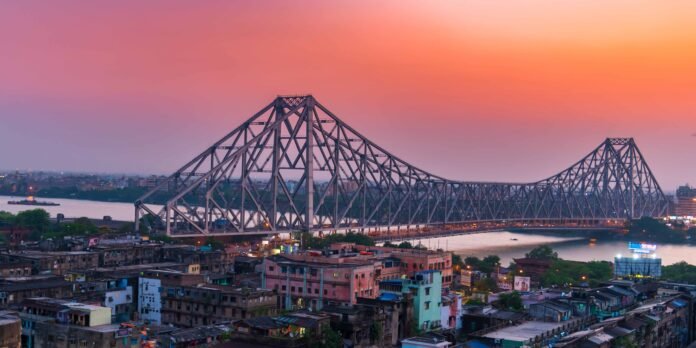Kolkata, often dubbed as the “City of Joy,” stands as one of India’s most vibrant and culturally rich metropolises. Situated on the eastern bank of the Hooghly River, Kolkata is the capital of the Indian state of West Bengal. This city, with its intriguing blend of history, culture, and intellect, offers visitors a unique glimpse into the heart of India’s past and present.
Historical Tapestry:
Kolkata’s history is deeply intertwined with the colonial era of India. Originally a small fishing village known as Sutanuti, Kolkata grew exponentially under British rule to become one of the most significant trading hubs in the British Empire. The British East India Company established a trading post here in the late 17th century, which eventually evolved into the colonial capital of British India until 1911.
The city played a pivotal role in India’s struggle for independence, witnessing various movements and protests led by prominent figures such as Rabindranath Tagore, Netaji Subhas Chandra Bose, and Mahatma Gandhi. The Quit India Movement of 1942, launched from Kolkata’s historic Gowalia Tank Maidan, marked a turning point in India’s fight against British imperialism.
Cultural Kaleidoscope:
Kolkata is a melting pot of cultures, religions, and languages. Its diverse population comprises Bengalis, Marwaris, Biharis, Anglo-Indians, and many other communities, each contributing to the city’s unique cultural fabric.
The city is renowned for its literary heritage, being the hometown of Nobel laureate Rabindranath Tagore and prolific writers such as Bankim Chandra Chattopadhyay and Sarat Chandra Chattopadhyay. The annual Kolkata Literary Festival attracts intellectuals and literary enthusiasts from across the globe.
Kolkata’s cultural calendar is dotted with festivals and celebrations throughout the year. Durga Puja, the grandest festival in Bengal, transforms the city into a vibrant carnival of lights, music, and art. The streets come alive with colorful pandals (temporary structures housing elaborately crafted idols of the goddess Durga), cultural performances, and gastronomic delights.
Architectural Splendor:
The city boasts a rich architectural heritage that reflects its eclectic past. From colonial-era buildings like the Victoria Memorial and St. Paul’s Cathedral to majestic landmarks like the Howrah Bridge and the Marble Palace, Kolkata’s skyline is a testament to its historical significance.
The North Kolkata neighborhood, with its narrow lanes and centuries-old mansions (known as “bonedi bari”), offers a glimpse into the city’s aristocratic past. The South Kolkata area, on the other hand, is characterized by its modern infrastructure, shopping malls, and bustling commercial centers.
Culinary Delights:
No visit to Kolkata is complete without indulging in its culinary delights. The city is famous for its street food, with must-try delicacies including phuchka (pani puri), kathi rolls, and jhal muri (spicy puffed rice). Bengali cuisine, known for its subtle flavors and delicate balance of sweet and savory, is celebrated in traditional dishes like macher jhol (fish curry), kosha mangsho (slow-cooked mutton), and rosogolla (syrup-soaked cottage cheese balls).
Conclusion:
Kolkata, with its rich tapestry of history, culture, and cuisine, continues to captivate visitors from far and wide. Its enduring spirit, resilience, and warmth make it a city like no other, leaving an indelible mark on all who have the privilege of experiencing its charm. As the cultural capital of India, Kolkata stands as a living testament to the country’s diversity and heritage, inviting all to immerse themselves in its vibrant rhythms and timeless allure.




